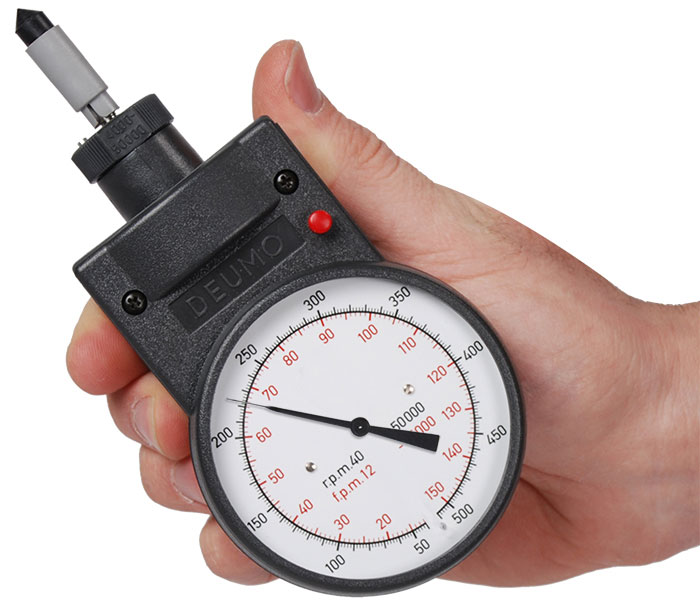The Significance of a Tachometer in Monitoring Engine Speed and Performance in Automotive Applications
In the world of automotive design, the tachometer stands as a critical tool in the chauffeur's arsenal, providing a straight home window right into the inner operations of a vehicle's engine. Past its function as a simple scale of transformations per min (RPM), the tachometer works as a crucial device for fanatics and specialists alike, providing real-time insights into engine performance and wellness. Recognizing the relevance of this gadget goes past surface-level observations, delving right into the complex partnership between engine rate, power output, and overall driving experience. As we explore the complex duty of the tachometer in automobile applications, a much deeper appreciation for its effect on lorry characteristics and performance starts to arise.
Value of Keeping An Eye On Engine RPM
Keeping track of engine RPM, or changes per min, is an important element of automobile upkeep and efficiency assessment. Engine RPM straight associates with the rate at which the engine's crankshaft revolves, showing how quickly the engine is running - tachometer. By checking RPM, technicians can assess the health and wellness of the engine, find prospective problems, and fine-tune performance. An abnormal RPM reading may indicate problems such as engine misfires, defective spark plugs, or issues with the gas shipment system. Continually high RPM analyses can indicate hostile driving practices or the demand for a higher gear change to improve fuel performance.
Additionally, keeping an eye on engine RPM is essential for efficiency evaluation in racing and high-performance cars. Preserving ideal RPM degrees is important for attaining peak power output and velocity. Racers typically make use of tachometers to ensure they are operating within the suitable RPM range for maximum performance. In summary, keeping track of engine RPM is not only essential for discovering problems but likewise for optimizing engine performance in various automotive applications.

Benefits of Real-Time Information
In automotive applications, real-time data plays a crucial duty in providing instant insights right into the performance and problem of the lorry. By continuously keeping an eye on various parameters such as engine rate, temperature level, fuel usage, and a lot more, real-time data provides many benefits that contribute to enhanced efficiency and safety when traveling.
Additionally, real-time data helps with efficiency optimization by giving immediate feedback on driving habits and engine effectiveness. Motorists can adjust their actions in real-time based on this info to attain better gas economy and lengthen the life-span of their car.

In addition, real-time information plays a crucial function in contemporary vehicle diagnostics, enabling specialists to swiftly diagnose and attend to malfunctions. This brings about minimized downtime, reduced maintenance costs, and inevitably, boosted general automobile reliability and longevity (tachometer). By utilizing the power of real-time information, auto stakeholders can make enlightened choices that favorably affect both the efficiency and long life of the lorry
Influence on Gear Shifts
The tachometer plays a critical duty in enhancing equipment shifts navigate here by offering real-time engine rate data to the driver. When approaching the redline on the tachometer, it signifies the driver to upshift to protect against over-revving the engine and triggering possible damage.
Additionally, the tachometer help in attaining smoother gear transitions, especially in manual transmissions. By keeping track of engine speed, chauffeurs can implement equipment changes at the optimal RPM variety, decreasing snagging movements and minimizing wear on the transmission parts. This accuracy in equipment changes not only improves driving convenience but also adds to fuel efficiency.
Enhancing Fuel Efficiency
Given the critical duty the tachometer plays in optimizing equipment shifts for performance and engine health and wellness, it straight adds to making best use of fuel efficiency in auto applications. By providing real-time feedback on engine speed, the tachometer assists chauffeurs in preserving one of the most effective RPM range for gas economy. When chauffeurs continually monitor the tachometer and change their driving practices appropriately, they can prevent unneeded gas intake triggered by over-revving or carrying the engine.
In addition, the tachometer helps chauffeurs recognize the most fuel-efficient equipment to be in at any type of given moment, preventing the engine from functioning tougher than required. This is particularly crucial throughout velocity and travelling, where remaining in the ideal gear can substantially impact go to this web-site fuel performance. Additionally, the tachometer can notify chauffeurs to prospective mechanical concerns that could be adversely affecting fuel economic situation, such as a slipping clutch or a clogged air filter. To conclude, the tachometer functions as an important device in enhancing gas efficiency by advertising optimum driving behaviors and recognizing areas for enhancement in the car's performance.

Maximizing Engine Durability
The tachometer's duty in keeping an eye on engine speed and performance contributes in making certain the durability of auto engines. By using the tachometer properly, chauffeurs can maximize engine long life through conscious RPM monitoring. Continually revving an engine expensive can cause excessive wear and tear on important parts, such as the pistons, valves, and bearings. With time, this can cause lowered engine performance and potential breakdowns. Monitoring the tachometer permits vehicle drivers to remain within the recommended RPM range for their lorry, stopping unneeded pressure on the engine and expanding its life expectancy.

Conclusion
Finally, the tachometer plays a vital function in monitoring engine rate and efficiency in auto applications. By providing real-time information on RPM, it permits for effective equipment changes, enhanced fuel effectiveness, and taken full advantage of engine durability. This tool is necessary for maintaining ideal engine efficiency and guaranteeing the total capability of a lorry.